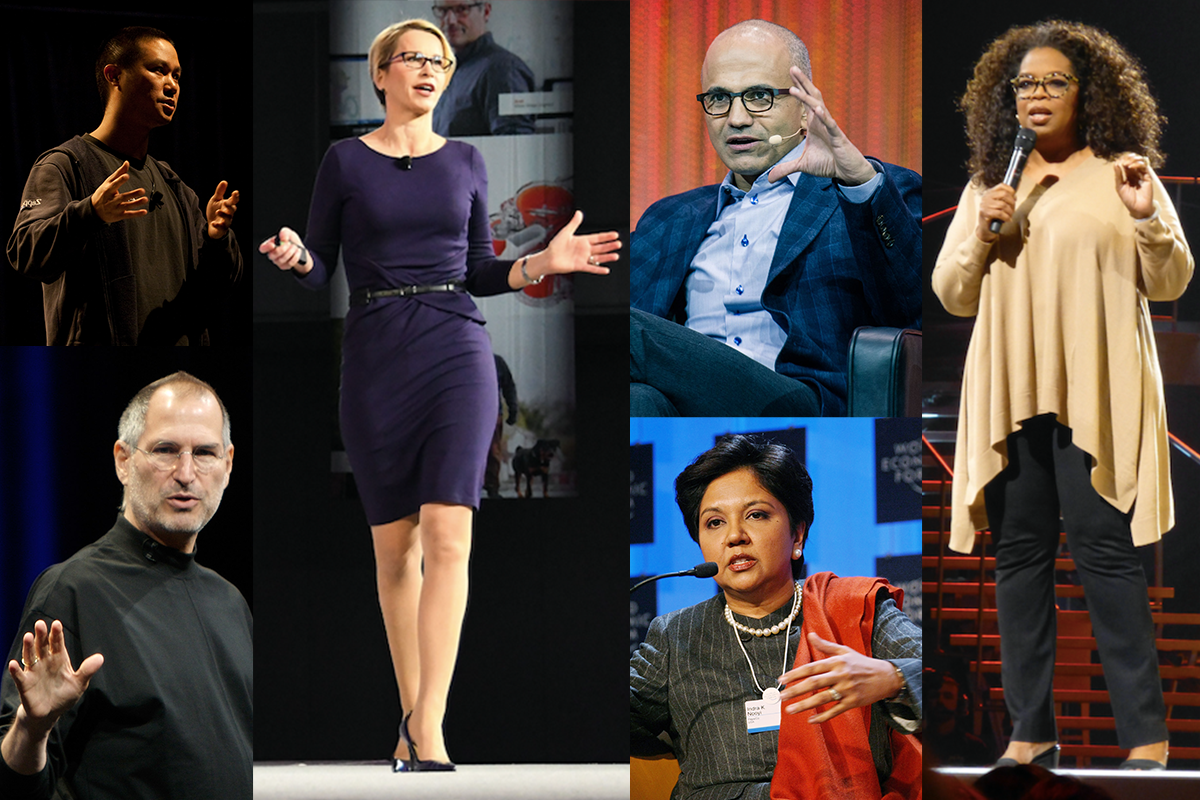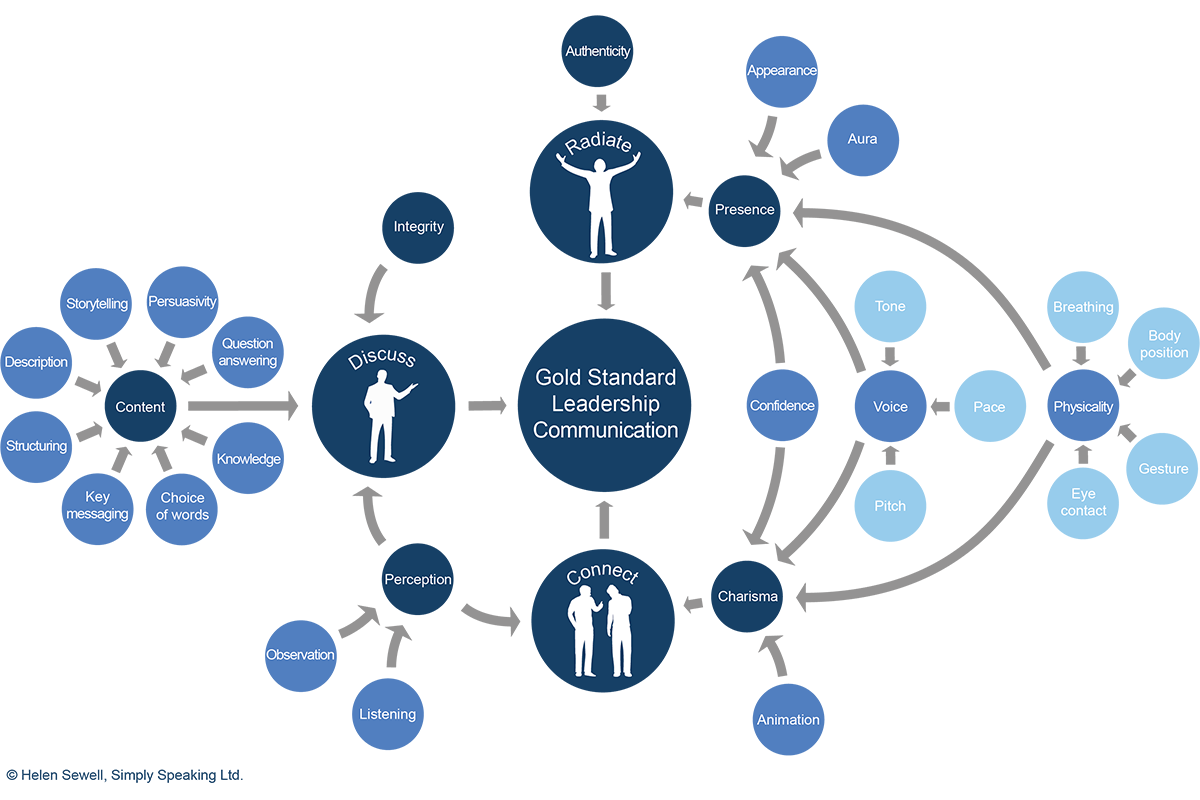
There’s no magic involved!
Firstly, let me debunk a myth. There is no elusive, mysterious quality to being a compelling speaker or a compelling leader. As a long-standing CEO Communication Coach, I say this with confidence: I’ve researched it academically and practically with leaders from all over the world.
There is no X-factor, or magic, behind superb communication. The world’s most influential communicators simply use knowledge and a select combination of skills to make their mark.
Inspiring leaders employ a range of techniques to create warmth, gravitas and influence. They understand what to say and how say it. They are practised at slotting together the pieces of the communication jigsaw to form an immersive, stimulating experience for those around them, and this attracts followers from across their stakeholder groups.
The mystery of gold standard communication
For many years, academics, analysts and investors have recognised the direct link between CEO communication and corporate success (or failure), but no-one knew the mechanism behind it.
Well, I love a mystery! Although I’m now a CEO Communication Coach, I was once an investigative journalist, and the joy of digging out a story still runs deep. So, when I was presented with a dissertation research opportunity for my Master’s degree in Corporate Communications, I set out to investigate.
Unwrapping the secrets of communication success
There is relatively little published about CEO and leadership communication, and what I found, I read voraciously. I watched speeches and interviews till my eyes went blurry. I questioned CEOs, financial analysts and fellow leadership communication coaches till my brain overflowed. I spent hours deconstructing what I’d learned and crumbling it into teeny, tiny particles of information, before trying, painstakingly, to slot the miniscule fragments back together into some form of logical pattern.
It was the beginning of the pandemic, and while the world revolved around Covid, my world revolved around CEO communication, mind-boggling analyses and far too many sleepless, communication-jigsaw-puzzle nights.
Eventually – thankfully – a framework emerged, phoenix-like, from my smithereens of data. I’m proud to say that I created what is still the only academically-validated and industry-validated model of gold standard leadership communication.
My quest was over. Job done. Gold-standard CEO communication understood. Gratifyingly, the university awarded me a distinction for my troubles, and my findings were shortlisted for a major European PR award. My work as a CEO Communication Coach was formally endorsed.
Practical implications for this CEO Communication Coach
It was all looking good. But academia isn’t the real world, of course. So I wanted to know whether my framework would stand up to scrutiny in practice. Would it actually work? Could I use it to coach senior executives to be the best of the best, as far as communication is concerned?
I finished my research in 2020 and since then I’ve been using my model of best-practice communication very successfully to train and coach leaders across the globe. I can tell you categorically that yes – it works. It works very, very well. Leaders who employ every element of communication in the framework make a significant difference to how they come across and how effectively they achieve their aims.
What’s involved in being a compelling leader?
The premise is simple. The most important element of your communication is what you say. That’s not news to anyone, but what counts is how you create your messages, how you structure your content, how you use your words effectively to influence and persuade. Very few senior executives have a good take on this, even those at the pinnacle of their profession who think they know exactly what they’re doing. Stop the press – they very often get it wrong!
Many leaders come to me because they want to increase their executive presence, or become comfortable in TV interviews, or improve the way they sound, or change some other aspect of their physicality or how they feel. They believe they understand their communication challenges and coaching requirements, and they justify their need for a CEO Communication Coach with a varying range of physical, psychological, emotional and/or social explanations.
But self-diagnosis is a dangerous thing. While some senior executives assess their needs correctly, I’m sorry to say that the vast majority don’t. The heart of the issue very often involves communication content, and leaders regularly overlook this. Just because you know your subject matter, it doesn’t mean you know how to explain it well.
It’s very difficult to demonstrate powerful presence or wow a media audience (etc.) if there’s a better way to frame your message, or tell your story. Only content connoisseurs can successfully wrap their words in layers of executive presence, gravitas, authority, confidence and warmth. I’ll talk about this in a moment, but first there needs to be a solid foundation of words.
Words of influence – the CEO Communication Coach perspective
In most countries, the education system does not teach effective communication skills. If you’re lucky enough to live in a country where communication does appear on the syllabus, you’ll find that it isn’t allocated very much time, and because you’re in a class, the teacher can’t give you much individual feedback. The likelihood is that you’ll leave education without knowing best practice in how to convey a successful message, tell a persuasive story, hit the spot when you answer questions, or subtly adjust your direction in response to the feeling in the room.
Of course, you can get by without official training, and you can become very successful. But with a CEO Communication Coach ensuring that you integrate the most effective communication skills into your everyday working life, you can really start to shine. And words are at the root of this.
Knowing how to incorporate word-based influence into your discussions means you are much more likely to convince those around you. I use the term “Discuss” as a shorthand way to describe this, so Discuss forms one of the major circles in my model of gold standard leadership communication.
It’s not all about words, though
There are two ways to create influence. In the first, words are the only currency. People listen to what you say. They digest your statements, reflect upon them and make a conscious, rational decision, based purely on the content of your communication. This decision-making process follows an intellectual pathway, based on thought alone, which allows people to choose how to respond to your words.
That said, we don’t always make judgements or take decisions based purely on logic. We are living, breathing, emotional beings, and while rationality is fundamental, we are also influenced by how we feel.
The second way to influence people involves creating positive vibes, which affect their gut feeling. This works like the chemistry in a personal relationship. When you meet someone that you really like and you ‘click’ with them, the emotional part of your brain predominantly makes this choice for you. It has very little to do with rational thinking. The chemistry, or magnetism, is just there, and you are swept along with it.
Chemistry counts – big time
Inspiring leaders generate this type of chemistry by combining a variety of communication elements. The formula varies from leader to leader but the effect is the same: it triggers the gut-feeling pathway to decision making and people respond accordingly. They are drawn in, they develop a feeling of trust and this encourages them to support the leader.
Of course, they have to hear the right messages (that’s why words are so important), but if that happens, and the chemistry is there, the working relationship is likely to be strong and successful.
As a CEO Communication Coach, I find interpersonal chemistry a fascinating phenomenon. Research shows that we make up our mind about someone within just two seconds of meeting them. It’s a ridiculously short timeframe. It also means that senior executives who know how to radiate leadership right from the start, are in with a good chance of achieving their communication aims. This is why “Radiate” forms another of the major circles in my model of gold standard leadership communication.
Building strong, deep connections
The best relationships are formed on a solid foundation of authentic communication – which is primarily skills-based and therefore learnable. (Yes, you can be authentic with learned skills!)
It will come as no surprise that a leader makes deeper connections when they engage with someone effectively over an extended period. This creates a bond based on mutual trust and respect.
Connecting with others successfully is fundamental for any leader who wants to inspire, and that’s why ‘Connect’ forms the third major circle in my model of gold standard leadership communication.
Make the difference – my advice as a CEO Communication Coach
When you first think about it, virtuoso communication might seem a challenging goal. However, while there are lots of elements involved, it’s certainly achievable – with support. The world’s most inspiring executives know exactly what to do:
- Exude leadership (Radiate)
- Engage successfully (Connect)
- Convince effectively (Discuss)
If you want to follow in the footsteps of the top leaders, then – like them – you will need to hone the skills involved in these three areas. When you combine them all successfully, you will trigger both routes of decision-making in others. You will activate people’s intellectual pathway plus their gut-feeling pathway to choosing a response each time.
This is what allows you to win hearts and minds. And this is what creates influence. This is why top leaders are compelling. This is how they inspire. And this is how you can be too.
When you adopt all the elements of my gold standard leadership communication model, you too can make the difference and start to communicate as well as the global best.
Explore the possibilities with a CEO Communication Coach
If you’d like a CEO Communication Coach to help you navigate your journey towards uber-compelling communication, do get in touch. Connect with me on LinkedIn, or drop me a line or give me a call and let’s chat!




